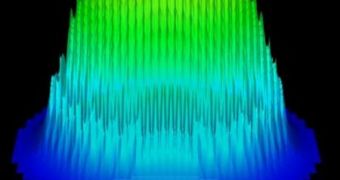Scientists at the US Department of Energy's (DOE) Argonne National Laboratory (ANL) announce the development of a new computer algorithm that allows for them to visualize the reactions that go on inside a nuclear reactor in finer detail than ever before. The neutron transport code UNIC, which is still under development at ANL, will provide researchers in the end with the most detailed view of a reactor's core possible, without them actually jumping inside a reactor.
Modeling the complex interactions of a nuclear reactor is one of the most complex tasks in physics today. It requires hundreds of angles of approach, thousands of energy groups, billions of spatial elements, as well as the introduction of all these things into a complex geometry. Naturally, all these elements cause the memory on most computers to get rapidly exhausted. Simulations therefore take many weeks and months to run, and even then the results are not the most accurate possible. In fact, most of the times, researchers use approximations in formulating their conclusions.
“The UNIC code is intended to reduce the uncertainties and biases in reactor design calculations by progressively replacing existing multilevel averaging techniques with more direct solution methods based on explicit reactor geometries,” ANL computational scientist Andrew Siegel, who is also the leader of the lab's reactor simulation group, explains. UNIC has already been run at some of the most advanced supercomputing facilities in the world, including the energy-efficient IBM Blue Gene/P at Argonne and the Cray XT5 at the Oak Ridge National Laboratory.
Engineers and nuclear physicists could use the UNIC algorithm to create safer, more environmentally friendly nuclear reactors, which could benefit a large number of countries in the world. As carbon dioxide becomes an increasing threat, oil and natural gas will be shunned from the market more and more, and renewable energies will take their place. Nuclear fission is one of the safest bets, but new nuclear reactors have not been built in a while. A video of a more detailed simulation of the Zero Power Reactor experiment is available online here.

 14 DAY TRIAL //
14 DAY TRIAL //